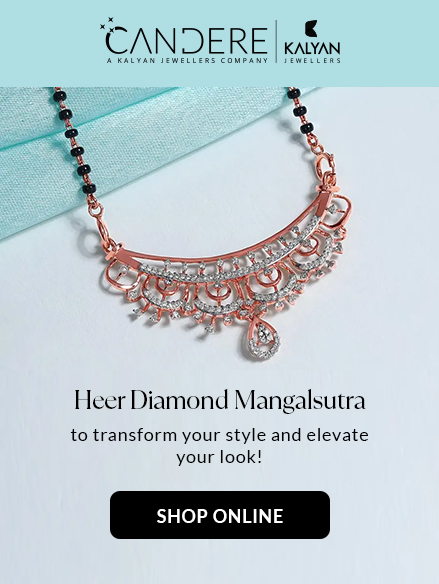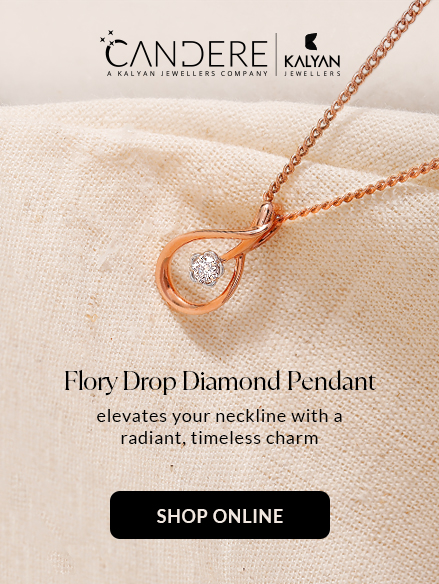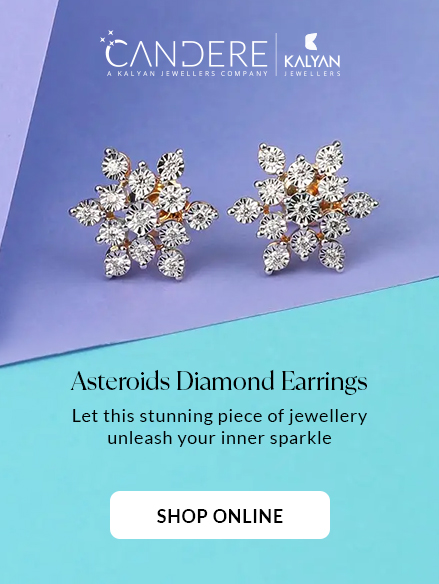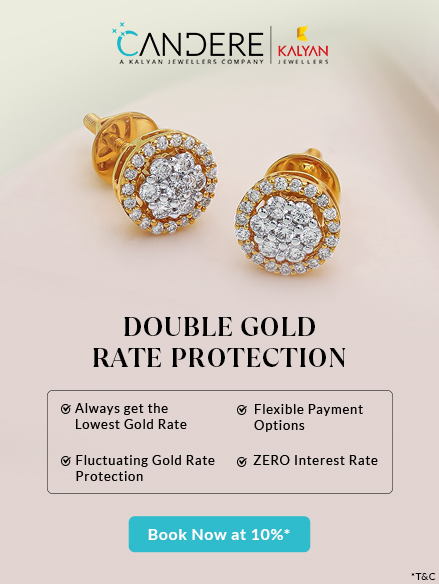Kalyan Wiki
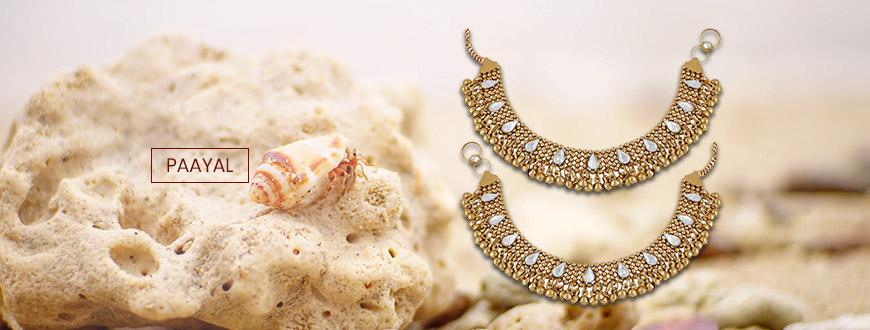
Paayal
'Paayal' is also known locally by many other names; 'Pajeb', in parts of North India and 'kolusu', in South Indian regions. If you still haven't figured out, it is the anklet worn by women mostly in the Indian subcontinent.
But anklets are not exclusive to us; Egyptians, as well as the Middle Eastern community at large, are known to have sported these beauties ages ago. With fashion becoming multinational and more of a fusion of many cultures, anklets have also entered the Western realm where more people wear it than you think, in pairs and alone, the latter being the preferred choice.
History
Indian jewellery and all its components have been around for a long while, which is
evident from the extensive temple paintings featured on the
walls of our ancient caves and temples. They are treasures of culture, and they
impart a perspective of our massive and grand history of creativity in arts,
enlightenment, entertainment and of course, jewellery. If you think ornaments are
lavish and in abundance you have missed out on the highly ornate and
luxurious lives led by royalty in the Golden Ages. One excellent example of this lies in
the sculptures of Khajuraho and the intricate artwork seen at the Ajanta and Ellora
caves. Along with them are the well-celebrated temple dancers who graced the
Royalty of South India.
Temple dancers were hugely acclaimed and held high positions in our part of the world. Known as 'Nayikas', they adorned beautiful jewellery from head to toe and in boastful quantities. For the same reason, Payals or anklets formed an integral part of their act, blending into the dance and setting the normal rhythm.
Unlike other jewellery, the payal would mostly be shrouded by the other elements of the heavily bejewelled dancers and only the enticing clinks of the paayal would be heard from the danseuse as she performed.
From accompanying performance arts, jewellery became a part of everyday jewellery in India, worn by a large majority of the people. Most anklets also have little bells or 'ghungroos that ring every time a lady walks. Traditionally, paayal is a perfect gift for the new bride. She is usually showered with elaborate paayals, mostly handmade and studded with crystals and precious stones. Paayals are incredibly super cute on children and babies as they learn to walk in them. They also serve as sound signals for the parents as to their location, which is one reason for the invention of paayals in the first place.
Health
From a health perspective, it believed that different energies rule our body; the
fluctuations in this energy flow drive our well being and path of life. Mythologically, the feet are believed to be a constant emitter of energy from the
body. Wearing metal ornaments, especially of gold and silver on the feet help ward
off negative energies and balance the chakra.
Traditional Payal
The traditional paayal is typically a silver or gold variety of anklet, consisting of a
classic design chain that comfortably hugs the feet. There will also be a couple of ghungroos or gold beads at the clasp that
rattles when you walk.This design is the standard and can choose the chain
according to your style.
Ghungaroo Lined Paayal
While traditional paayals have only a few ghungroos, more sophisticated ones are
fully lined with these beads, mostly in three or four layers. They can either be tightly
packed into the structure or spaced out. A fine example of this one would be those
worn by dancers during performances to better project each step's sound to the
audience.
Besides that, since ghungroos are also very pretty insight, they generally are worn with Indian attire.
Minimal Paayal
For a bride who wants the charm of a staple paayal, but does not want it to be too
loud and bold, a minimalistic paayal is ideal. It can be just a simple chain that goes
around the ankle. You can even get them with no ghungroos, or if you are
particularly fond of a design, you can also get the ghungroos removed at the
jewellers. This style's premium choice is the snake chain, simple as it is, high on lustre
and gives an elegant feel. Other options include the ball chain or the Spiga paayal.
Those who prefer to wear a paayal every day choose the thin chained one with a tiny locket in the current generation. These are convenient, easy to carry and add an element of glamour to the drabbest of dresses. Look out for cute lockets of stars, marine life, enamel worked flowers, or simple stone worked pieces. Wear them in pairs for functions and parties and ditch one for the ultra-chic and sophisticated look for the office or any other place.
Stone encrusted Paayal
Paayals can be glammed up too. Whether it is to match your over the top lehenga or
to add more life to your plain kurta, a stone worked paayal will be a show-stealer for
sure. With the current trend of baring the feet and legs, paayals are almost
indispensable at weddings. Precious stone-like sapphires and rubies are used on
high-end paayals, bordered with tiny bunches of pearl hangings. Keep your budget in
place with gold paayals lined with coloured crystals and zircons that can work just as
well.
Chunky Paayal
If you look at the most happening trend now, it is chunky and bold everything. Check
out enormous paayals in silver; studded with kundan stones on the top three layers
and the bottom edge trimmed with a thick entanglement of ghungroos. Talk about
being extra! These may look quite intimidating, but when worn with the right outfit,
which would be a typical Rajasthani inspired mirror worked lehenga for perhaps your
mehendi, they will add much needed colour and life to your ceremony. They will
make great photo treasures for sure!
Kundan Paayal
The thing about kundan is that it can match with almost any
attire. When you are sporting a kundan necklace and super cute kundan earrings,
why not add a delicate kundan paayal along. Kundan paayals can easily be paired
with traditional Kancheepuram sarees to look beautifully and blended in.
Tribal Boho Paayal
This is the choice of a bold and beautiful bride. When the Mehendi laden feet are
adorned with oxidised gold paayals that are handcrafted to perfection, it will be
worth the effort for sure. Oxidised gold has a certain aura to it that exudes the vibe
of an adventurous bride. Spice it up with beautiful coin toe rings and stone studded
ones too for the complete look.
Dual Toned Paayal
Crazy about gold and silver but can't decide which one? You don't have to. Ask your
jeweller for dual-toned paayals that have a combination of the two,
alternating in a twisted chain style. Delicate multi-layered bead chains in
gold and silver overlap together to form a very effortless and natural style of paayal.
These are lightweight and also easy on the pocket.
Paayal Plus Toe Ring
An extension of the conventional paayal has both the paayal and toe ring joined
together by a chain, which symbolises the bond of marriage. Enamel work in green
alongside bright rubies crafted enhances the beauty of the anklet and the
chain. These are quite different from the ordinary and are worth a try.
Designer Paayal
Break the tradition of chain paayals and get the best of designers quality in this
category too. Most paayals are clingy and chain oriented, so why not choose the
kada model this time? Lovely paayals that are perfectly round and studded with
crystal stones with multi-colour enamels are indeed a sight to treasure. These can be
worn as a single paayal to complement your western outfits too.
Layered Paayal
When you are in love with a number of styles from Kundan to Jadau to Ghungroo
and pearl trims, your paayal has to be a harmonious combination of all these. So you
make the best of all worlds meet. Decked up in layers of delicate craftsmanship, a
riot of colours and a perfectly lined mixture of styles, this can make for the ultimate
paayal. Make sure to tone it down with your outfit and not go too over the board
with this style.
Extravagant Paayal
This one combines two sets of elaborate chains that have silver hangings all over.
They have connected with chains again and further to a number of toe
rings that don the feet The connecting links are delicate designs of flowers carved into gold or silver and entirely cover the feet. This may look too extra, which
it is, but is stunning in its way. You can also get these customised to
your liking regarding the number of toe rings involved and the type of
chains.


